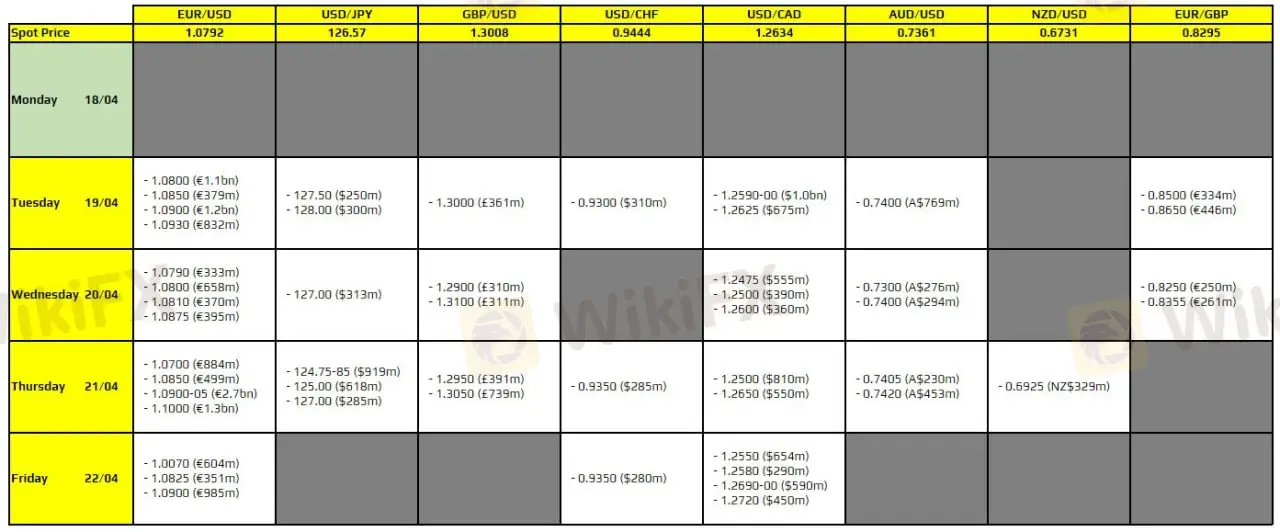简体中文
繁體中文
English
Pусский
日本語
ภาษาไทย
Tiếng Việt
Bahasa Indonesia
Español
हिन्दी
Filippiiniläinen
Français
Deutsch
Português
Türkçe
한국어
العربية
How to Know Where Banks are Buying and Selling in the Forex Market
Abstract:Forex market yet none are achieving the success they are in search of. They don’t realize the key factor in trading is proper market timing: the ability to identify market turning points in advance, before they happen. It is also the ability to identify where market prices are going to go, before they go there.
1) Low Risk: Entering at or close to the turn in price means you are entering a position in the market very close to your protective stop. This allows for maximum position size while not risking
2) High Reward (profit margin): Similar to number one above, the closer your entry is to the turn in price, the greater your profit margin. The further you enter into the market from the turn in price, the more you are reducing your profit.
3) High Probability: Proper market timing means knowing where banks and institutions are buying and selling in a market. When you are buying where the major buy orders are in a market, that means you are buying from someone who is selling where the major buy orders are in the market and that is a very novice mistake. When you trade with a novice, the odds of success are stacked in your favor.
more than you are willing to lose. The further you enter the market away from the turn in price, the more you will have to reduce position size to keep risk in line.
Forex bank trading strategy
So how do we time the market‘s turning points in advance? It all begins and ends with understanding how to properly quantify real bank and institution supply and demand in any and all markets. Once you can do that, you are able to identify where supply and demand is most out of balance and this is where price turns. Once price changes direction, where will it move to? Price moves to and from the significant buy (demand) and sell (supply) orders in a market. So, again, once you know how to quantify and identify real supply and demand in a market, you can time the market’s turning points in advance, with a very high degree of accuracy.
To better understand how to do this, lets take a look at a recent trading opportunity that was identified in our online graduate trading program, the Extended Learning Track (XLT) on March 25th. The XLT is a two hour live trading session with our students three to four times a week. During the session shown below, we identified an area of Demand in the EURO (highlighted in red) / 1.31975 – 1.32065. You can also see that Demand zone on the chart, the two lines creating a “buy zone”, allowing us to apply our simple rules for entering a position. This was an area of Bank/Institution Demand for a few reasons. First, notice the strong rally in price from the origin of that rally (the Demand level). Also, notice that price rallies a
significant distance before beginning to decline back to the Demand level. These two factors tell us that Demand greatly exceeds Supply at this level. The fact that price rallies a significant distance from that level before returning back to the level clearly shows us what our initial profit margin (profit zone) is.
These are two of a few “Odds Enhancers” we teach in our graduate program. They help us quantify the bank and institution Supply and Demand in a market which is the key to knowing where the significant buy and sell orders are in a market. The plan with this trade was to buy if and when price declined back to that area of Demand. This trade was high probability but how do we know that? Well, being very confident that there is significant Demand at that level, this tells us that we will be buying from a seller who is selling at a price level where Demand exceeds Supply. Selling after a decline in price and at a price level where Demand exceeds Supply is the most novice move a trader can take. These are “retail” sellers selling where “banks and institutions” are buying. The retail sellers are selling with the odds stacked against them which means they are stacked in the buyers favor like our XLT members in this trade.

Disclaimer:
The views in this article only represent the author's personal views, and do not constitute investment advice on this platform. This platform does not guarantee the accuracy, completeness and timeliness of the information in the article, and will not be liable for any loss caused by the use of or reliance on the information in the article.
Read more

Degiro Review 2025: Trading Accounts, Demo Accounts and Withdrawals to Explore
DEGIRO claims to be a popular online broker known for its competitive trading fees and a great range of investment options, including stocks, ETFs, bonds, and options. DEGIRO stands out for is its low-fee structure, often significantly cheaper than competitors, achieved by focusing on execution-only services. This, however, comes at the cost of less comprehensive research tools and educational resources compared to full-service brokers. While functional, DEGIRO's platform is considered less sophisticated, lacking advanced charting, in-depth research, and real-time news. Additionally, its customer service has been criticized for some withdrawal problems, as well as being slow to respond at times.

Darwinex Accounts & Darwinex Demo Accounts to Explore
Darwinex is a UK-based regulated online trading platform and broker that offers a unique approach to trading and investment. Darwinex goes beyond traditional brokerage by integrating innovative technology with trading, offering proprietary tools unavailable elsewhere. Its“Darwins”, investable algorithms, enable users to mirror successful traders' strategies. Traders can execute their own trades and also invest in other traders' strategies through these Darwins. The platform operates under FCA regulation and provides access to various markets, including forex, stocks, indices, commodities, and cryptocurrencies. Rather than a pure broker, Darwinex would be more like a community-focused platform.

eToro Review 2025: Trading Accounts & Withdrawals to Explore
eToro is an intuitive online trading platfrom that features social trading solutions, a unique being in the industry, with great popularity among both novices and seasoned traders. On the eToro platform, traders can trader over greater amount of stocks and ETFs with zero commission charged,anencouraging feature was later adopted by many of its competitors. 55 currencies can be traded, with spreads starting at 1 pip (typically on the euro/usd pair), not that competitive, and a trading fee of 1% trading fee of 1% applies to crypto trading. Opening a trading account is quite easy for investors, and demo accounts (funded with $100,000 virtual money) are also provided to enhance beginners' trading courage. However, a major disencouraging point is that this broker has a more limited platform options, only eToro proprietary trading platform and MetaTrader (MT4) supported.

Capital.com Review 2025: Trading Account & Withdrawal to Explore
Despite its relative youth, the Cyprus-registered online broker Capital.com has garnered respectable attention from a large number of retail and professional investors since its 2016 launch. Capital.com is a frontrunner among low-cost trading products; it allows individual and institutional investors to trade contracts for difference (CFDs) on three thousand markets, including Forex, Stocks, Commodities, Indices, Cryptocurrencies, and more. Impressively, Capital.com is on board with ESG investments as well. You can begin trading CFDs on the Capital.com platform with as little as $20. You can trade CFDs on this platform without paying any commissions; the only fees involved are the spreads. This broker offers a wide range of platforms, including mobile apps, a desktop trading app, an API from Capital.com, Tradingview, and MetaTrader 4. Among Capital.com's many distinguishing features is the wealth of educational content and high-quality research it offers its users. The platform's Marke
WikiFX Broker
Latest News
TD Bank to Sell $14.9 Billion Schwab Stake, Repurchase Shares
Warning Against Agra Markets: Stay Cautious!
Hacker Who Breached SEC Account and Falsely Announced Bitcoin ETF Approval Faces Trial
Trump tariffs: Retaliate or negotiate - what will US partners do next?
VPFX Secures UAE SCA License, Expands FX and CFDs Services
Oil Prices Fluctuate as Iran and Trump Clash!
Best Regulated Forex Brokers Offering Daily Trading Signals
RBI New Initiative: ‘bank.in’ to Protect You from Fraud
MultiBank Group Launches UAE CFD Shares on MultiBank-Plus App and MT5
TradingHub Expands in Australia with Bronwyn Hill as Senior Relationship Manager
Currency Calculator



